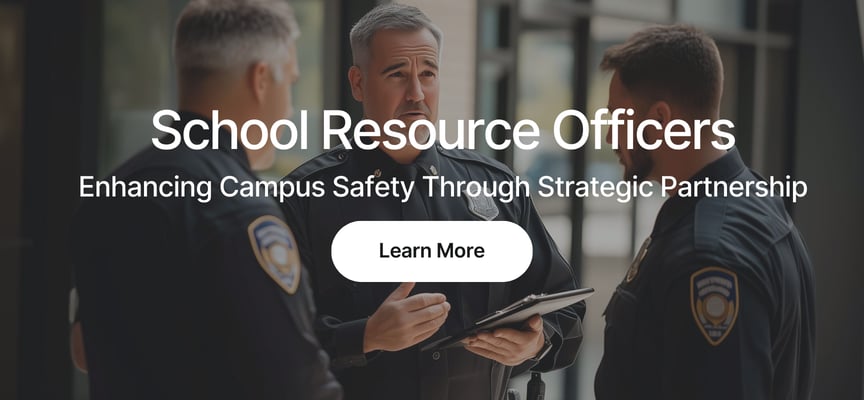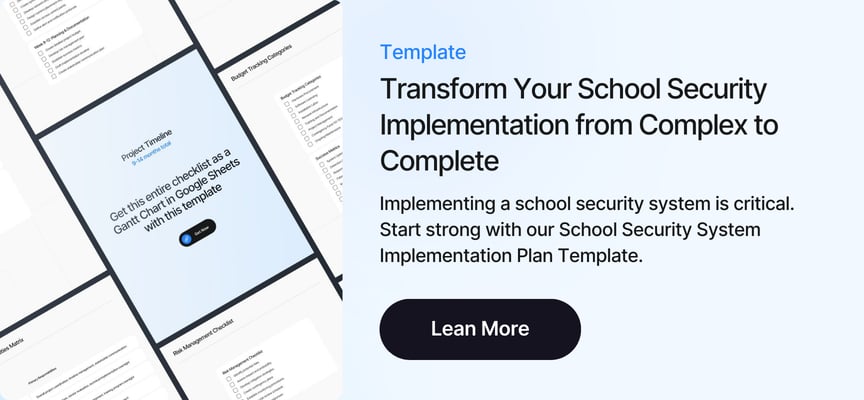Key Points
- People: School security teams need clearly defined roles, comprehensive training programs, and direct partnerships with local law enforcement to enable effective emergency response
- Process: Emergency operations plans must evolve from static documents into practiced protocols that function effectively under crisis conditions
- Visual Intelligence: AI-powered security systems transform existing video surveillance cameras into proactive threat detection tools that deliver real-time alerts within seconds
- Speed Matters: Federal research demonstrates that many school shooting incidents conclude before police arrive on scene, making immediate threat detection and rapid response capabilities essential for student safety
- Proven Framework: A structured 90-day implementation roadmap helps educational institutions deploy comprehensive school security systems without overwhelming staff resources or operational budgets
The Stakes Have Never Been Higher
School safety and security challenges have intensified significantly over the past two decades. Current data reveals the extent of threats facing educational institutions nationwide.
Federal statistics document 328 K-12 casualties from active shooter incidents between 2000 and 2022. The National Center for Education Statistics reports these numbers alongside broader violence trends affecting school security. In 2022 alone, U.S. public schools recorded 857,500 violent incidents, with 67% of schools reporting at least one violent incident requiring security intervention.
The FBI's comprehensive analysis of active shooter incidents reveals a critical insight for school security planning. Many active shooter events end before police arrive, which fundamentally changes how schools must approach safety and security measures. This reality emphasizes the importance of immediate threat detection capabilities and rapid response protocols within schools themselves.
Effective school safety and security programs must address this reality through proactive measures. Waiting for external emergency response means accepting preventable harm to students and staff.
What Research Tells Us About Effective Protection
Two decades of experience and federal guidance have identified evidence-based approaches that work in school safety and security. These research-backed strategies form the foundation of modern protection programs.
- Threat assessment prevents violence before it starts. The U.S. Secret Service National Threat Assessment Center recommends multidisciplinary threat assessment teams that identify concerning behaviors early. This guidance shows these teams significantly reduce security incidents when properly implemented in school environments.
- Rapid notification saves lives. Multiple states have adopted Alyssa's Law requirements for silent panic alert systems that connect directly to law enforcement. At least ten states now mandate or encourage these emergency notification systems, including NJ, FL, NY, TX, TN, UT, OK, GA, WA, and OR.
- Integrated response training works. Programs like ALERRT (Advanced Law Enforcement Rapid Response Training) have trained over 130,000 first responders nationwide in coordinated emergency response. This training emphasizes coordination between law enforcement, fire, EMS, and school staff during critical security incidents.
- Comprehensive planning reduces chaos. The REMS (Readiness and Emergency Management for Schools) framework stresses joint planning with first responders and continuous improvement of emergency operations plans. This guidance helps schools develop actionable security protocols.
School safety and security isn't about choosing between prevention and response. Effective programs integrate both through a clear framework that addresses multiple threat scenarios.
Visit our School Security System Funding Resource Center.
The Three Pillars of Modern School Safety and Security
The strongest school safety and security programs rest on three integrated pillars. Each pillar addresses specific vulnerabilities while working together to create comprehensive campus protection.
People: Building Your Security Team
Your school security team extends beyond dedicated security personnel. It includes administrators, teachers, counselors, and local first responders working together with clearly defined roles in your safety program.
- School Resource Officers need proper training and oversight. The DOJ COPS Office Guiding Principles for School Resource Officer Programs establishes standards for hiring, training, role definition, and accountability. These guidelines help schools maximize security benefits while avoiding unintended consequences of law enforcement presence.
- Threat Assessment Teams require diverse expertise. Effective teams include school administrators, counselors, SROs, teachers, and sometimes legal counsel. The Secret Service NTAC model provides a framework for intake, evaluation, management, and intervention protocols that strengthen school security.
- Local law enforcement partnerships matter immediately. Formalize relationships through memoranda of understanding that specify emergency response protocols, communication channels, and joint training schedules. These agreements eliminate confusion during critical security incidents when seconds count.
Read our School Resource Officer Guide.
Process: From Plans to Action
Emergency operations plans fail when they remain theoretical documents. Effective security processes turn written protocols into practiced responses that work under extreme stress.
- Emergency Operations Plans need regular testing. REMS guidance recommends conducting security drills at least twice yearly with different threat scenarios. Tabletop exercises, functional drills, and full-scale exercises each serve distinct purposes in building emergency preparedness and response capability.
- Communication protocols require clear decision trees. Define who has authority to initiate lockdowns, when to notify parents, and how to coordinate with media during security incidents. Pre-approved message templates reduce delays during actual emergencies and maintain clear communication channels.
- Threat assessment requires documented workflows. Establish clear processes for reporting security concerns, evaluating threats, managing cases, and tracking outcomes. Documentation protects privacy while ensuring consistent responses across different staff members in your school security program.
Visual Intelligence: Technology That Works
Visual intelligence transforms existing security cameras from passive recording devices into active threat detection systems. This advanced technology addresses the fundamental limitation that human security operators cannot monitor hundreds of cameras simultaneously across campus.
Real-time detection capabilities change response timelines. AI-powered security systems analyze video feeds continuously to identify weapons, fights, medical emergencies, and unauthorized access. VOLT AI's weapon detection system can identify firearms even when held at a person's side, providing security alerts before weapons are brandished and threats escalate.
- Automatic tracking maintains situational awareness. When a weapon is detected, advanced school security systems like VOLT continue tracking the individual's movement through 3D facility maps. This capability ensures security teams and responding officers know exactly where threats are located as situations develop.
- Integration with existing infrastructure reduces costs. Modern visual intelligence platforms work with security cameras schools already own. This compatibility eliminates expensive hardware replacement while dramatically improving security capabilities. VOLT AI integrates with existing camera systems to provide comprehensive monitoring without infrastructure overhaul.
- Human verification prevents false alarms. Sophisticated systems include Security Operations Center validation before escalating alerts. This human-in-the-loop approach ensures accuracy in threat detection while maintaining rapid response times of 15 seconds or less for verified security incidents.
Measuring Impact: What Success Looks Like
School safety and security investments must deliver measurable improvements to campus protection. The following table shows how different security interventions affect key performance indicators in educational environments.
Security Investment | Primary Impact | Measurable Outcome |
Visual Intelligence Systems | Detection speed: Identifies threats before escalation | Response initiated within 15 seconds of incident detection |
Threat Assessment Teams | Prevention rate: Reduces incidents through early intervention | Documented pre-incident interventions and case resolutions |
SRO Training Programs | Response coordination: Improves multi-agency effectiveness | Reduced confusion during joint exercises and actual incidents |
Emergency Plan Exercises | Staff readiness: Increases confidence and correct responses | Higher accuracy scores on drill evaluations and faster decision times |
Panic Alert Systems | Notification speed: Reduces time from incident to law enforcement dispatch | Direct-to-911 alerts eliminate communication delays |
Schools should track these security metrics quarterly to identify improvement opportunities. Baseline measurements before implementing new school safety and security measures enable clear before-and-after comparisons of program effectiveness.
Your 90-Day Implementation Roadmap
Moving from current capabilities to comprehensive school safety and security requires structured execution. This roadmap breaks the transformation into manageable phases for educational institutions.
Phase | Timeline | Key Actions | Success Indicators |
Assess | Days 1-30 | Conduct security audit covering threat assessment maturity, EOP currency, technology inventory, and responder relationships; Convene school safety committee with administrators, SROs, counselors, facilities, and IT; Document current capabilities and security gaps | Completed audit report; Safety committee established; Gap analysis finalized |
Pilot | Days 31-60 | Implement threat assessment team with intake forms and case tracking; Run joint exercise with local law enforcement and fire/EMS; Deploy visual intelligence pilot in 10-20 priority areas (main entrances, cafeteria, hallways) | TAT handling first cases; Exercise completed with after-action review; Visual intelligence generating verified alerts |
Scale | Days 61-90 | Update and publish Emergency Operations Plan with drill schedule; Train all staff on new security protocols and alert systems; Approve budget for campus-wide technology deployment; Establish ongoing performance monitoring | Updated EOP distributed; Staff training completed; Budget approved; Metrics dashboard active |
This phased approach prevents overwhelming staff while building momentum toward comprehensive security coverage. Each phase delivers immediate value to school safety while preparing for the next level of capability.
Common Challenges and Solutions
School administrators face predictable obstacles when enhancing school safety and security programs. Understanding these challenges in advance enables proactive mitigation strategies.
- Budget constraints limit technology adoption. Visual intelligence systems that integrate with existing security cameras cost significantly less than complete infrastructure replacement. Schools should calculate the comparison: a comprehensive AI security system often costs less than hiring a single full-time security employee while providing 24/7 monitoring across the entire campus.
- Staff resistance to new protocols. Change management requires explaining why new approaches work better than existing security measures. Share research from the FBI and Secret Service showing effectiveness of evidence-based security methods.
- Technology overwhelms security teams. Start with pilot deployments in high-priority areas rather than campus-wide rollouts. This approach allows staff to gain confidence with manageable camera counts before expanding security coverage.
- Privacy concerns from parents and community. Modern systems like VOLT AI track behaviors and clothing rather than using facial recognition. This privacy-preserving approach addresses concerns while maintaining security effectiveness.
Get answers to your key questions directly from administrators who've been there.
Moving Forward with Confidence
School safety and security has evolved from reactive investigation to proactive prevention. The integration of people, process, and visual intelligence creates a comprehensive approach that addresses today's complex threat landscape in educational environments.
Schools don't need unlimited budgets or complete infrastructure overhauls to improve campus security. The evidence shows that strategic investments in threat assessment teams, proper training, and AI-powered monitoring deliver substantial improvements within 90 days.
The critical question isn't whether to enhance school safety and security. Federal research and tragic experience have answered that question. The real question is how to implement evidence-based protection efficiently and effectively across your campus.
The framework presented here provides that path. It aligns with federal guidance, incorporates proven training methods, and leverages security technology that works with existing infrastructure. Schools following this approach create environments where students and staff feel protected, enabling everyone to focus on education rather than fear.
Partner with VOLT AI to implement visual intelligence that transforms your existing cameras into comprehensive threat detection systems. Our platform integrates with your current security infrastructure to provide real-time alerts, automatic tracking, and validated notifications to your security team and law enforcement. Schedule a demo to see how schools are achieving 15-second response times and preventing incidents before they escalate.






